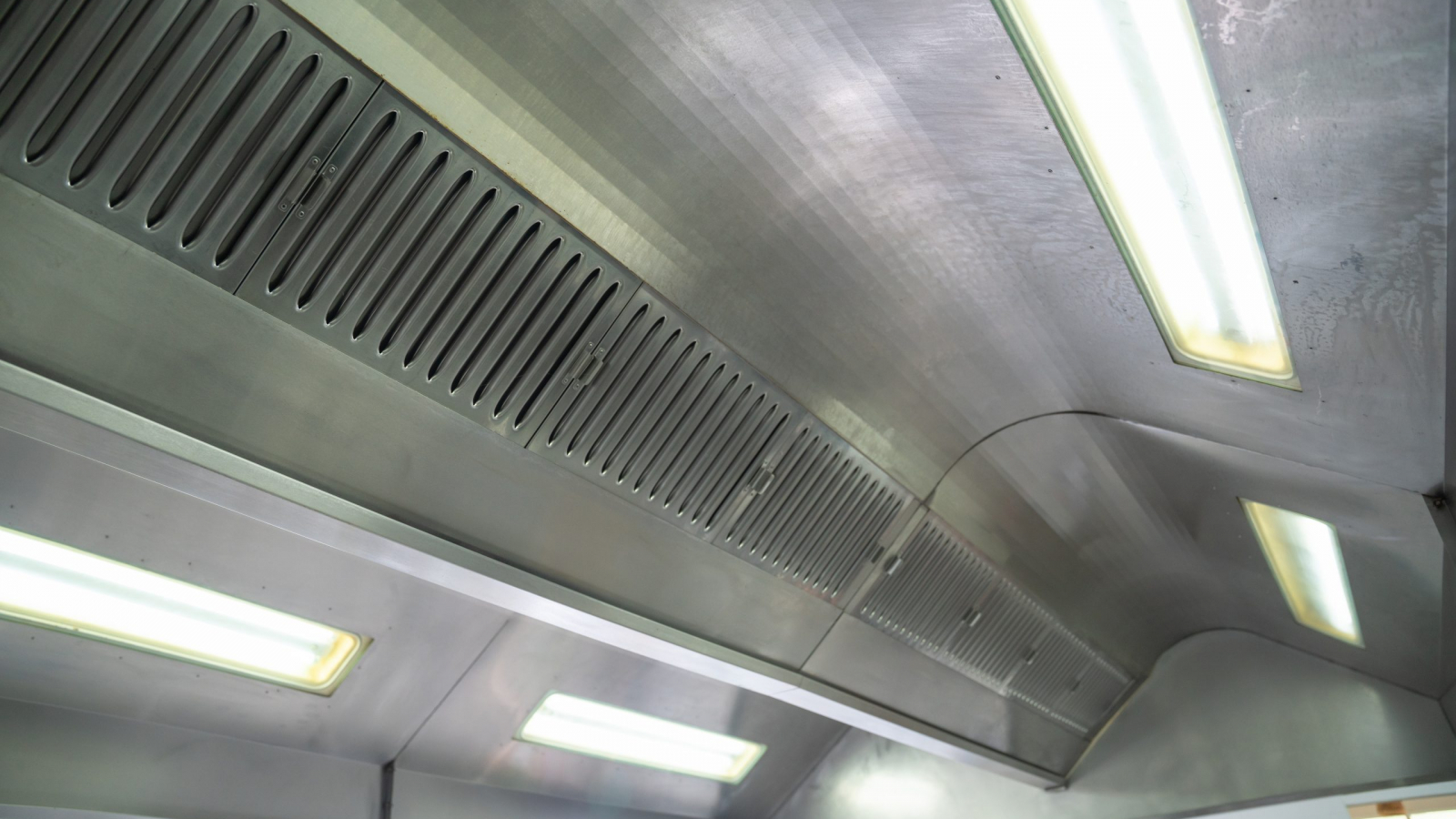In any commercial kitchen, the canopy hood is one of the hardest-working — and most neglected — pieces of equipment. Positioned above cooklines, fryers, and grills, it quietly removes steam, smoke, and grease-laden air from your workspace. But over time, that grease builds up, becoming a serious fire hazard and a barrier to clean airflow.
Whether you run a busy café in Bedminster or a restaurant in Clifton, canopy hood cleaning is essential to your kitchen’s safety, hygiene, and performance. Yet many businesses don’t realise how vital regular cleaning is — until something goes wrong.
In this post, we’ll explain:
- Why canopy hoods matter to fire safety and compliance
- What’s involved in a professional clean
- The risks of leaving it too long
Why Canopy Hood Cleaning Matters for Restaurants
A Hidden Risk in High-Grease Environments
In a commercial kitchen, the canopy hood plays a crucial role in removing grease-laden air, smoke, and odours from the cooking line. But with continuous use, it becomes a collection point for grease particles and vapours produced by fryers, grills, ovens, and gas burners.
Over time, these residues accumulate in key areas:
- Inside the hood and canopy housing
- On baffle filters and grease trays
- Within the ventilation ducting that connects to the extractor fan
Without scheduled cleaning, this build-up transforms into a flammable film — invisible to your team during service, but a clear violation during inspections. It’s one of the most common causes of extraction-related kitchen fires and a frequent reason for compliance issues during TR19 audits or Environmental Health Officer visits.
Why Routine Cleaning Makes a Difference
Routine canopy hood cleaning isn’t just about surface appearance — it’s a key part of kitchen risk management. By maintaining clean hood systems, restaurants can:
- Reduce fire hazards linked to grease ignition
- Maintain compliance with TR19® and food safety standards
- Improve ventilation and airflow, keeping working conditions safe and comfortable
- Avoid costly repairs or equipment failure caused by blocked systems
- Present a hygienic, professional environment that reflects positively on the business
For restaurants operating in high-output environments, canopy hood cleaning should be a scheduled part of your kitchen maintenance plan, not an afterthought.
What’s Involved in Professional Canopy Hood Cleaning?
Cleaning your canopy isn’t just a quick wipe-down — it’s a multi-stage process that targets all grease-capturing components.
1. Internal & External Canopy Cleaning
Technicians begin by degreasing all exposed surfaces inside and outside the canopy. This includes:
- Baffle filters
- Light fittings
- Surrounding metal surfaces
Non-toxic, food-safe degreasers are used to safely break down built-up oils.
2. Filter Removal & Cleaning
Baffle filters (or mesh filters) are removed, soaked, and scrubbed clean. These are the first line of defence against airborne grease — but also one of the quickest areas to clog.
3. Ventilation Pathway Inspection
Once the canopy is clean, technicians assess the next stage of the system — the ducting and extractor fans — to check for signs of grease carry-through.
If build-up has reached further into the extraction system, a more comprehensive service such as kitchen extraction cleaning may be recommended.
4. Documentation & Compliance
KESC Ltd provides documentation including:
- Before-and-after photographs
- Maintenance checklists
- Recommendations for future cleaning intervals
- TR19 certification (if extraction cleaning is also carried out)
This evidence is crucial for insurance renewals, fire safety audits, and EHO visits.
Common Questions About Canopy Cleaning
A. No. Filters help trap larger grease particles, but fine vapours still pass through and settle on the interior surfaces of the canopy and into the ducts. Regular filter cleaning is important — but it doesn’t replace full system maintenance.
A. The frequency depends on kitchen usage, but for most full-service or high-turnover kitchens in Bristol, canopy cleaning should be carried out every 1–3 months. Grease levels should be monitored weekly to avoid reaching unsafe thresholds.
A. KESC Ltd provides overnight and weekend canopy cleaning, so your kitchen can operate as normal during trading hours. Cleaning is scheduled at your convenience, with minimal disruption.
Keeping Kitchens Safe, Clean and Compliant with Expert Canopy Hood Cleaning in Bristol
At KESC Ltd, we support commercial kitchens throughout Bristol’s food scene — from independent bistros in Clifton to fast-paced takeaways in Stokes Croft — with reliable, professional canopy hood cleaning tailored to your operational needs.
Our service goes beyond basic cleaning. We deliver a structured hygiene solution that safeguards your kitchen from fire risks, keeps you compliant, and ensures smooth day-to-day operation.
Here’s how we help:
- Fire-safety-trained technicians with full TR19 knowledge and BESA accreditation
- Evening, early morning, and weekend appointments to keep your kitchen running
- Integrated services including ventilation system cleaning and ESP maintenance
- No hidden fees — including zero charges for emergency callouts
- Detailed compliance packs with before-and-after photos, cleaning logs, and inspection-ready documentation
Stay Ahead of Grease Build-Up — Not Behind It
Canopy hood cleaning is more than just good housekeeping. It’s fire prevention, compliance assurance, and kitchen efficiency — all in one. In a fast-moving food scene like Bristol’s, where reputation and safety go hand in hand, keeping your canopy clean should never be left to chance.


